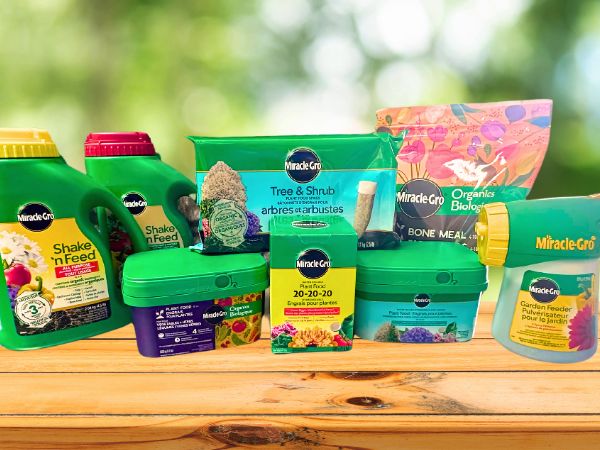
A Beginner’s Guide to Fertilizers
Feeding Your Garden
A healthy garden isn’t just about sun and water—it’s also about giving your plants the nutrients they need to thrive. That’s where fertilizer comes in. Whether you’re growing veggies, flowers, or shrubs, understanding how and when to fertilize can make a huge difference in plant health, growth, and blooms.
What Do the Numbers Mean? (e.g. 5-15-20)
You’ve probably seen fertilizers labelled with three numbers, like 5-15-20. These refer to the N-P-K ratio:
- N = Nitrogen – Promotes lush green growth and healthy leaves.
- P = Phosphorus – Encourages strong root development and flowering.
- K = Potassium – Supports overall plant health, disease resistance, and fruit production.
Different plants benefit from different ratios. For example:
- Lawns love high nitrogen (e.g. 30-0-10).
- Flowering plants like balanced or high phosphorus blends (e.g. 10-20-10).
- Vegetables often need a well-rounded formula (e.g. 5-10-10).
Fertilizer Types: What’s the Difference?
There’s no one-size-fits-all when it comes to fertilizer. Here’s a quick breakdown of common types and when to use them:
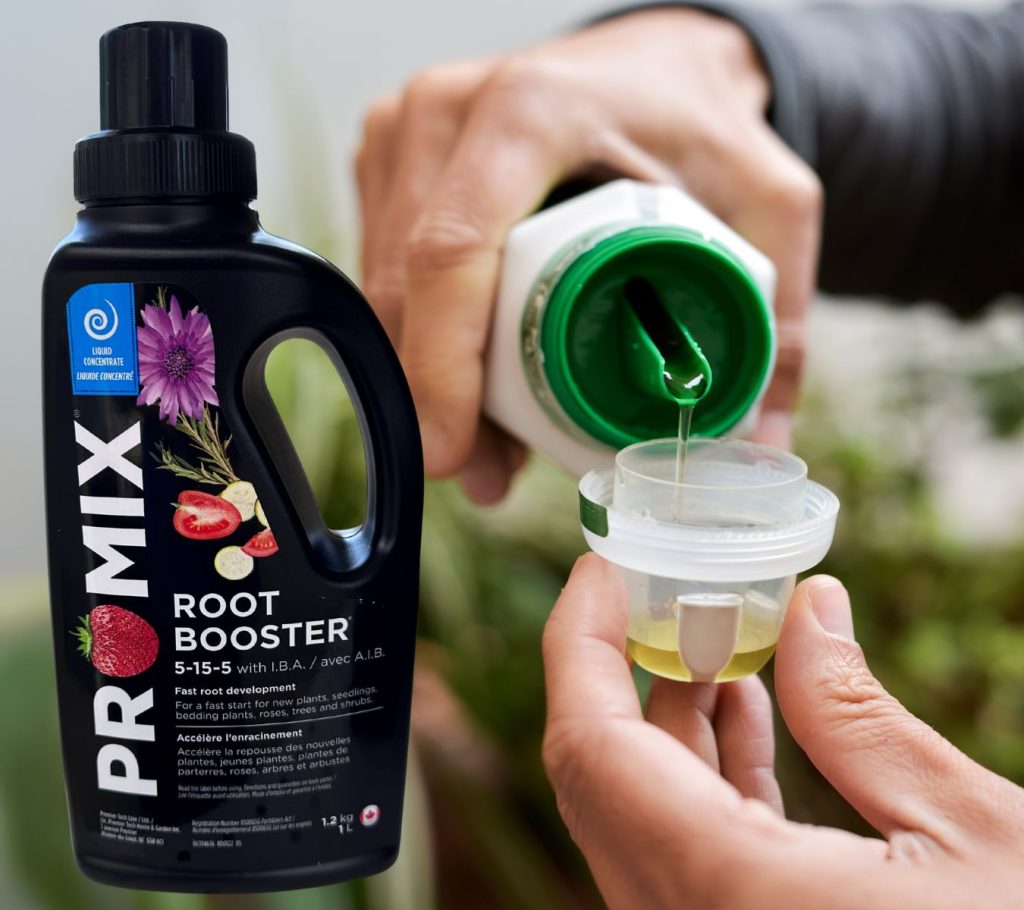
Transplant Fertilizer
- Avoid using anything else the first year—new roots are sensitive, and overfeeding can cause stress or burning.
- Use only when planting or transplanting new plants.
- Typically high in phosphorus to help roots establish.

Water-Soluble Fertilizer
- Needs to be reapplied every 1–2 weeks.
- Fast-acting and easy to apply with a watering can or hose-end sprayer.
- Great for container plants, annuals, and veggies.
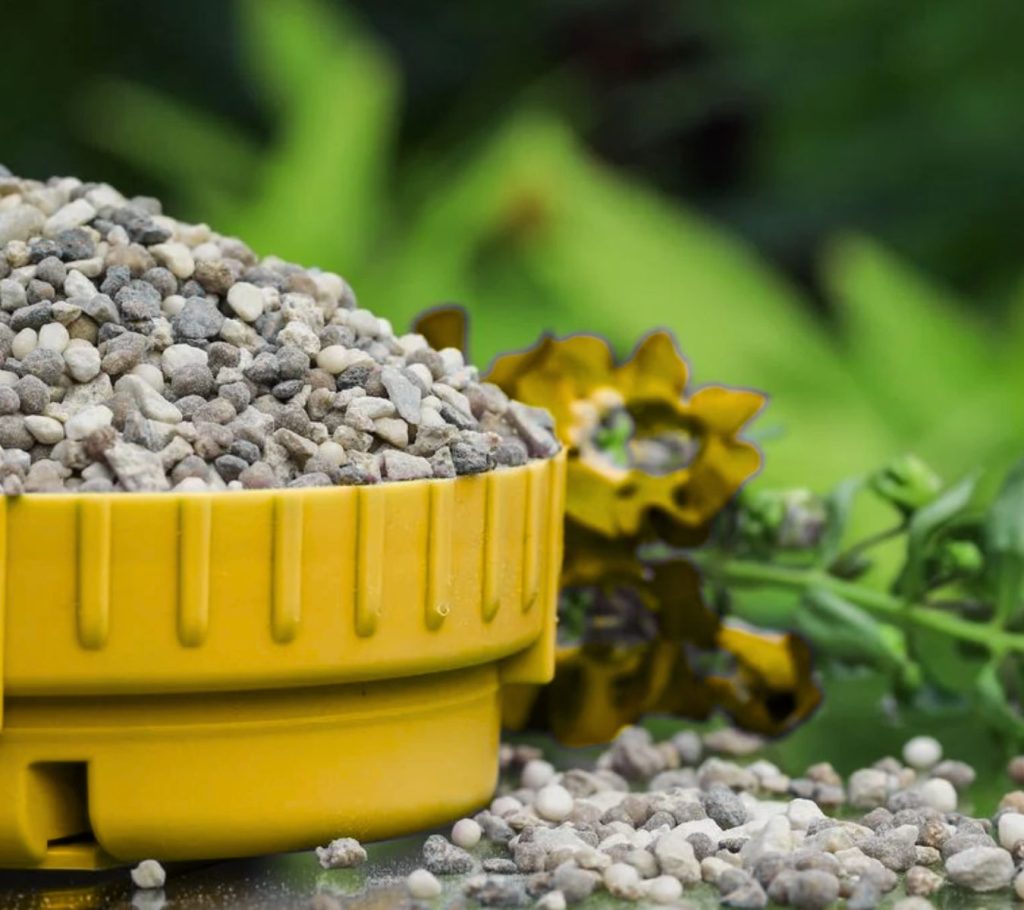
Slow-Release or Time-Release Fertilizer
- Excellent for consistent feeding without frequent applications.
- Coated pellets that release nutrients gradually over time (often 2-3 months).
- Low-maintenance and ideal for garden beds and perennials.
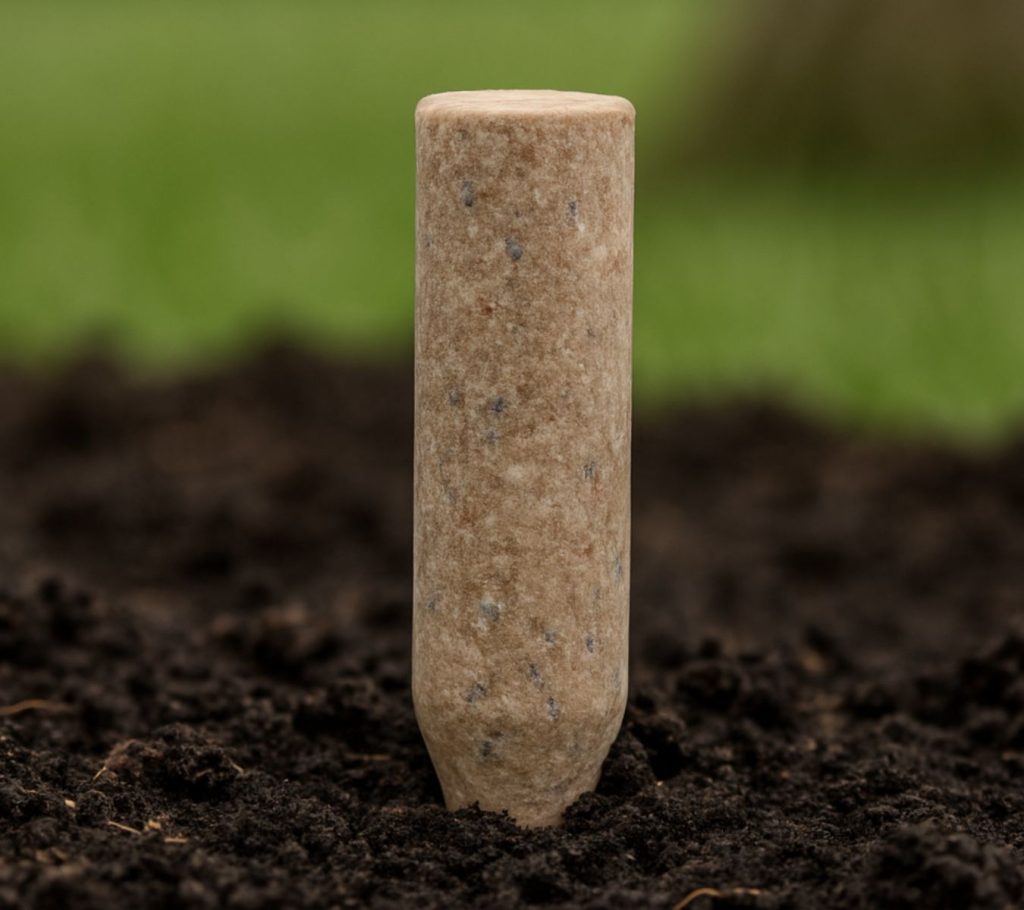
Fertilizer Spikes or Stakes
- Feed over time, but not as easily adjustable once applied.
- Convenient and tidy—just push into the soil.
- Best for shrubs, trees, and houseplants.
Which Plants Love Regular Feeding?
Some plants are heavy feeders and will reward you with better performance if fed regularly:
- Roses – Thrive on a regular feeding schedule during the growing season.
- Annuals – Benefit from weekly or biweekly fertilizing for continuous blooms.
- Vegetables – Especially tomatoes, peppers, and squash—need steady nutrients.
- Hanging baskets & containers – Nutrients leach out quickly, so they need frequent top-ups.
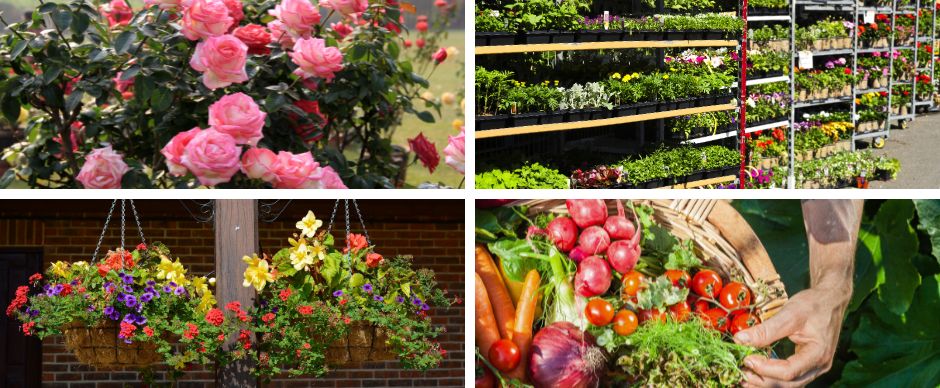
When and How Often Should You Fertilize?
Creating a schedule helps take the guesswork out of feeding:
- Spring: Apply slow-release fertilizer at planting time or early in the season.
- Mid-season (June/July): Reapply time-release, or switch to water-soluble for a quick boost.
- Late summer: Ease off on feeding perennials and shrubs to help them prepare for dormancy.
- Fall: Avoid fertilizing most plants—too much nitrogen can trigger late growth and winter damage.
Tip: Always water well before and after applying fertilizer to prevent root burn.
How Do You Know What Your Plant Needs?
- Yellowing leaves? Might mean a nitrogen deficiency.
- Poor flowering? Could be low phosphorus.
- Weak stems or wilting? Check potassium levels or watering practices.
- Doing a soil test is the best way to determine what nutrients your garden may be lacking. Many garden centres offer kits or testing services.
The Bottom Line? A little fertilizer goes a long way when used correctly. Start with the right type, follow a consistent schedule, and pay attention to your plant’s specific needs. You’ll be rewarded with more flowers, bigger harvests, and stronger, healthier plants all season long.
